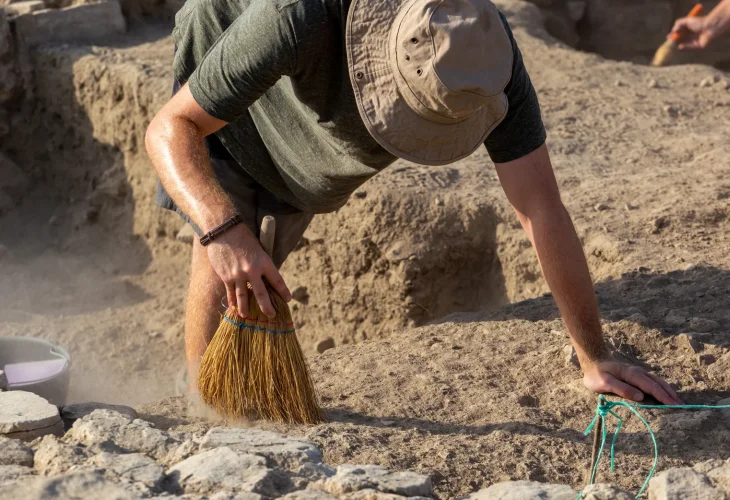The Lost City: Uncovering Ancient Synagogues Rediscovered
Rarely does a city disappear from the map entirely. We've read about it in history books, yet no one has a clue where it is. This happened to the city of Dura Europos.
 (Photo: shutterstock)
(Photo: shutterstock)Many historical accounts feature famous cities from the ancient world: Babylon, Alexandria, Athens. Yet, it’s rare for a city to completely vanish. Mentioned in history books, yet its exact location remained a mystery.
This was the fate of Dura Europos, a city repeatedly noted in historical texts: a fortified, significant city perched on the banks of the Euphrates at the far eastern edge of the formidable Tadmor Desert. Built by the Seleucid Greeks, successors of Alexander the Great who ruled Syria, it was captured by the Romans in 165 CE, around the time the Mishnah was written. A hundred years later, in 265 CE, it was overtaken by the Sassanians (Persians). This was all that was known in history, and from then until 1920, the whereabouts and fate of the city, its walls, and its buildings remained unknown.
On March 30, 1920, shortly after the Middle East was divided among Western powers post-World War I, a British soldier discovered a stone wall protruding from a sand dune, adorned with stunning paintings. This was near the village of Al-Salhiyah in present-day eastern Syria. A team of researchers commenced extensive excavations, which took over a decade and revealed much of Dura Europos, remarkably preserved. It turned out that during the Persian siege, the Romans filled the western side of the city with sand, within and between the buildings, to fortify the walls against breaches. This side remained buried in sand for about 1600 years. The Sassanians were brutal, annihilating all inhabitants, even utilizing chemical weapons: burning bitumen and sulfur crystals together. The resulting toxic gas clouds suffocated Roman soldiers. The city was simply abandoned, and over time, its remains were covered by sands into silence.
One of the most astonishing finds during the excavation was the ancient synagogue of Dura Europos. Surprisingly large for such a remote location, it contained 120 seats. Stone benches stretched across the synagogue, with the names of prominent donors engraved on special plaques on the walls. The western wall featured a niche for Torah scrolls—a Holy Ark. Most surprising were the vibrant, well-preserved frescoes on the walls. These murals vividly depicted biblical scenes: the lives of the Patriarchs, Pharaoh’s daughter descending to bathe, the Giving of the Torah, Moses, the Exodus, the Prophet Ezekiel, Queen Esther, the Israelite wars against the Philistines, King Saul and King David, the Prophet Samuel, and many more. The paintings were detailed, colorful, and visually striking. Notably, none of the figures had eyes, likely to avoid creating complete human images.
The synagogue was preserved thanks to the Roman defense technique. It was on the city’s western side, filled with sand from floor to ceiling, allowing it to survive through the ages. The last prayer likely took place there in 255 CE, during the time of the early Amoraim.
If this account makes you eager to visit, we're sorry to disappoint. On September 19, 2014, the area of Dura Europos fell into the hands of ISIL fighters. Access is restricted to those outside the ISIL sect, and satellite imagery suggests the site has been looted and destroyed. Although some of the murals were moved to the National Museum of Damascus, where you can view them, should you be brave enough to enter Syria...

